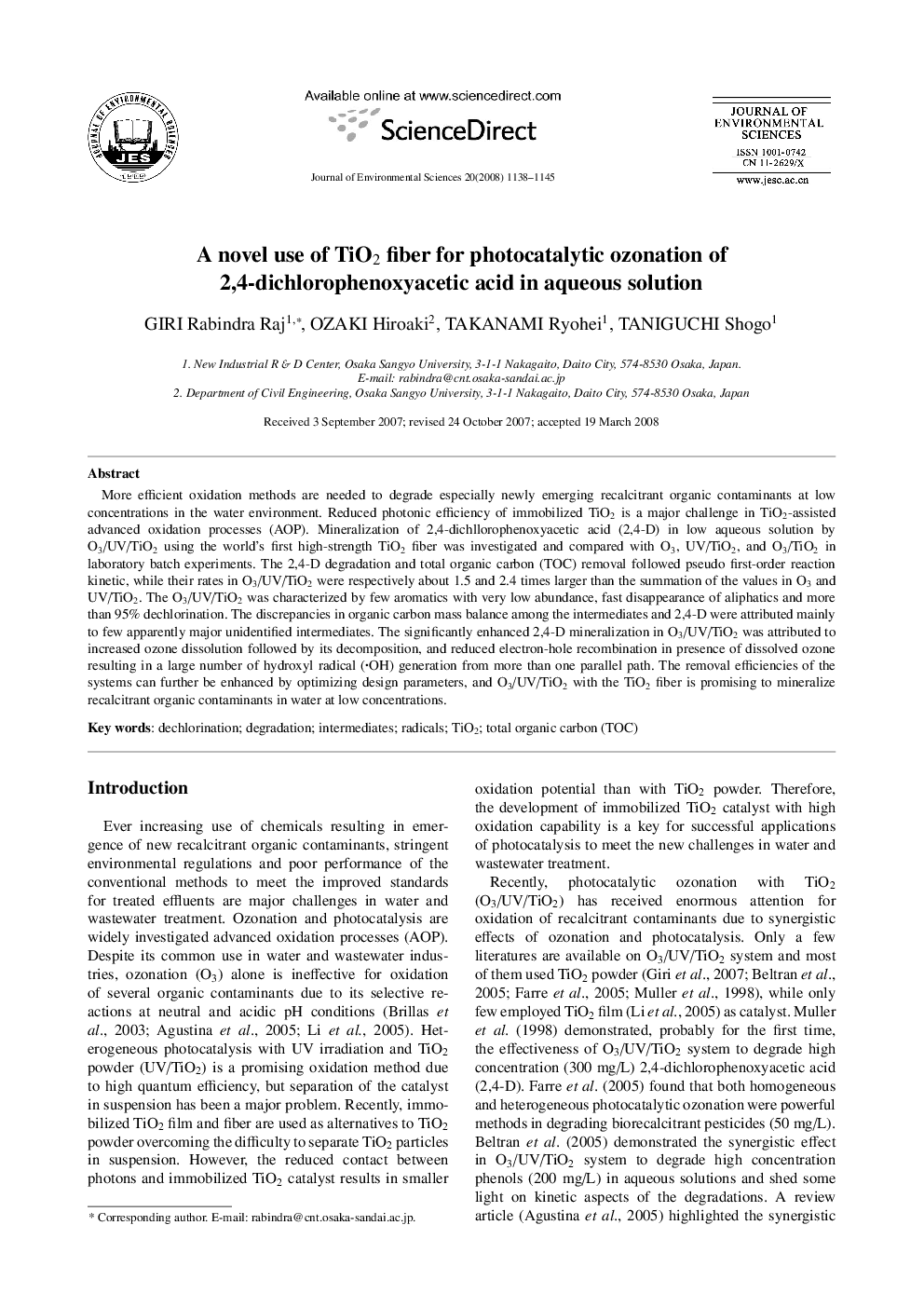| Article ID | Journal | Published Year | Pages | File Type |
|---|---|---|---|---|
| 4456009 | Journal of Environmental Sciences | 2008 | 8 Pages |
More efficient oxidation methods are needed to degrade especially newly emerging recalcitrant organic contaminants at low concentrations in the water environment. Reduced photonic efficiency of immobilized TiO2 is a major challenge in TiO2-assisted advanced oxidation processes (AOP). Mineralization of 2,4-dichllorophenoxyacetic acid (2,4-D) in low aqueous solution by O3/UV/TiO2 using the world's first high-strength TiO2 fiber was investigated and compared with O3, UV/TiO2, and O3/TiO2 in laboratory batch experiments. The 2,4-D degradation and total organic carbon (TOC) removal followed pseudo first-order reaction kinetic, while their rates in O3/UV/TiO2 were respectively about 1.5 and 2.4 times larger than the summation of the values in O3 and UV/TiO2. The O3/UV/TiO2 was characterized by few aromatics with very low abundance, fast disappearance of aliphatics and more than 95% dechlorination. The discrepancies in organic carbon mass balance among the intermediates and 2,4-D were attributed mainly to few apparently major unidentified intermediates. The significantly enhanced 2,4-D mineralization in O3/UV/TiO2 was attributed to increased ozone dissolution followed by its decomposition, and reduced electron-hole recombination in presence of dissolved ozone resulting in a large number of hydroxyl radical (·OH) generation from more than one parallel path. The removal efficiencies of the systems can further be enhanced by optimizing design parameters, and O3/UV/TiO2 with the TiO2 fiber is promising to mineralize recalcitrant organic contaminants in water at low concentrations.
